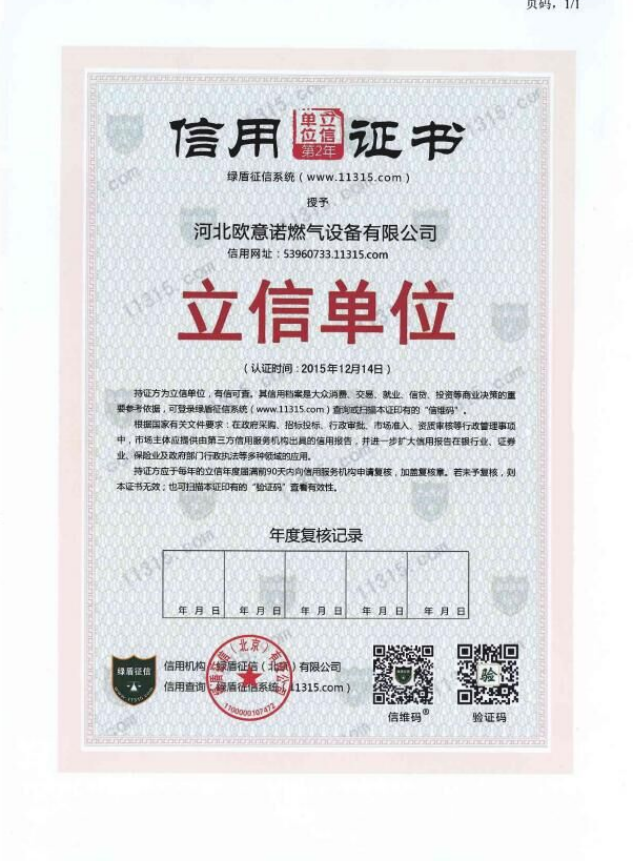
Aug . 01, 2024 10:36
Back to list
Understanding the Functionality and Applications of Gas Pressure Regulator Valves in Various Systems
Understanding Gas Pressure Regulator Valves Importance and Functionality
Gas pressure regulator valves play a crucial role in the management and distribution of gas within various applications, from residential heating systems to industrial processes. These devices are essential for ensuring that gas flow remains consistent and safe, thereby preventing overpressure situations that could lead to equipment failure or dangerous leaks.
At its core, a gas pressure regulator valve is designed to control the pressure of gas coming from a supply source, such as a gas cylinder or pipeline, before it enters an application or appliance. The primary function of the regulator is to maintain the outlet pressure at a set level, irrespective of variations in the input pressure or the volume of gas being drawn by the system. This regulation is vital because different types of gas appliances require specific pressure levels to operate effectively and safely.
The construction of a gas pressure regulator valve usually consists of several key components a diaphragm, a spring, an adjustment mechanism, and inlet and outlet ports. The diaphragm is a flexible membrane that responds to changes in pressure; when the inlet pressure increases, the diaphragm moves to reduce the flow and prevent excessive pressure from reaching the appliance. The spring helps to maintain tension on the diaphragm, allowing for a predetermined outlet pressure to be set and held stable.
Adjustment mechanisms can vary; some regulators have a simple screw that can be turned to increase or decrease the outlet pressure, while others feature more advanced systems that allow for precise control and fine-tuning. It is essential to select a regulator that matches the requirements of the specific gas application, considering factors such as the type of gas, required flow rate, and pressure levels.
gas pressure regulator valve

Safety is a significant concern in gas applications, and pressure regulators are designed with several safety features to mitigate risks. For instance, many regulators incorporate vents to release excess pressure should the regulator become over-pressurized. Additionally, some models are equipped with built-in shut-off valves that automatically stop gas flow in the case of a failure. Regular maintenance and inspections of these devices are critical to ensuring operational reliability and safety.
The importance of gas pressure regulator valves extends beyond safety; they also enhance the efficiency of gas systems. By providing a stable and consistent pressure, these regulators help optimize the performance of appliances, leading to better energy efficiency and reduced operating costs. In residential settings, this translates to more effective heating and cooking, while in industrial applications, it ensures that processes run smoothly without interruptions or equipment damage.
Another critical aspect is compliance with regulations and standards governing gas usage. Many regions have strict guidelines on gas installations, emphasizing the use of proper regulators. Adhering to these regulations not only ensures safety but also impacts insurance and liability considerations for businesses and homeowners alike.
In conclusion, gas pressure regulator valves are indispensable components for safe and efficient gas management. Understanding their function, construction, and safety features is essential for anyone involved in gas applications, whether at home or in an industrial setting. Selecting the right regulator and ensuring its proper maintenance can prevent accidents, improve performance, and lead to significant cost savings over time. As technology advances, the design and capability of gas pressure regulators continue to evolve, promising even greater efficiency and safety in the future.
Latest news
-
Safety Valve Spring-Loaded Design Overpressure ProtectionNewsJul.25,2025
-
Precision Voltage Regulator AC5 Accuracy Grade PerformanceNewsJul.25,2025
-
Natural Gas Pressure Regulating Skid Industrial Pipeline ApplicationsNewsJul.25,2025
-
Natural Gas Filter Stainless Steel Mesh Element DesignNewsJul.25,2025
-
Gas Pressure Regulator Valve Direct-Acting Spring-Loaded DesignNewsJul.25,2025
-
Decompression Equipment Multi-Stage Heat Exchange System DesignNewsJul.25,2025

